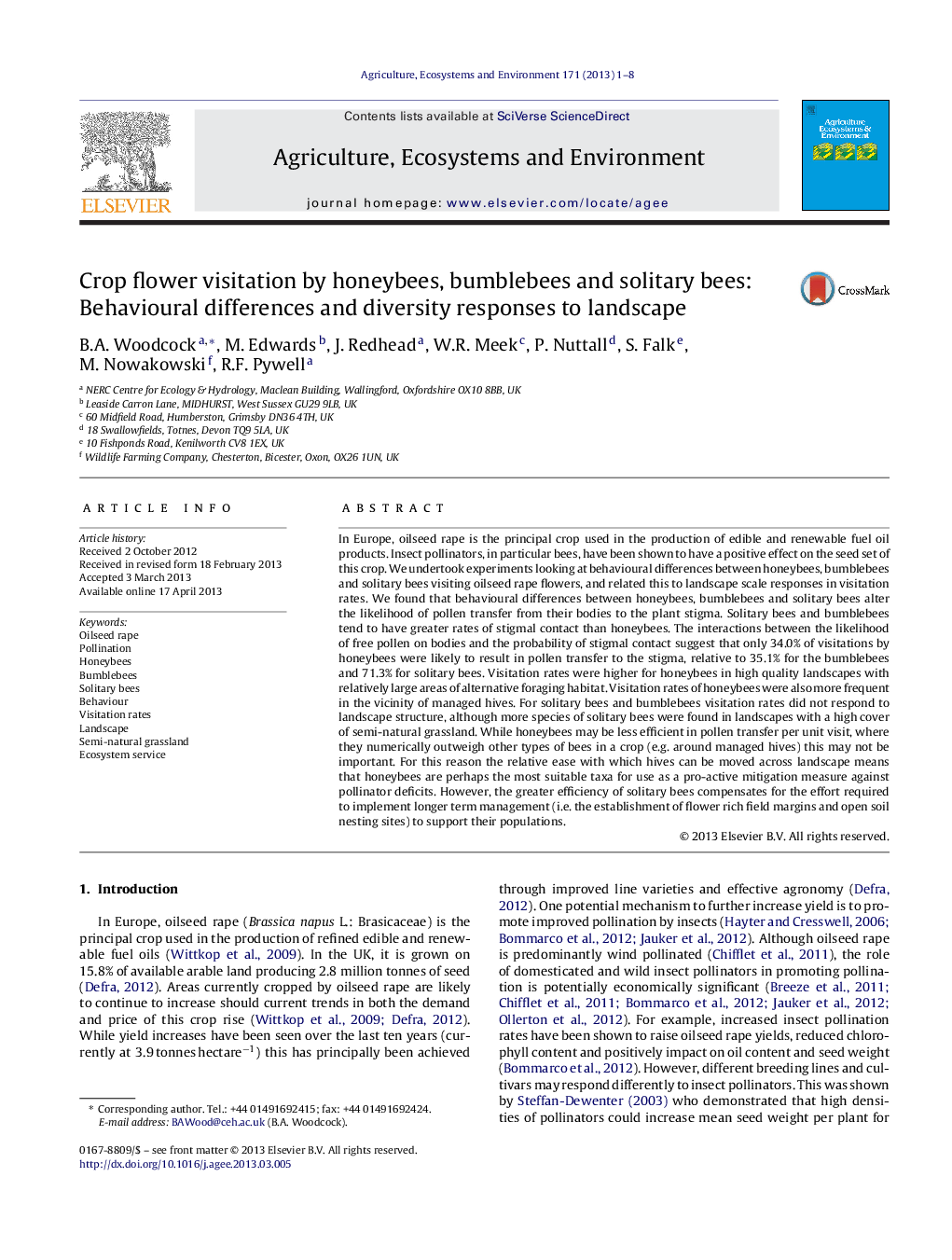| کد مقاله | کد نشریه | سال انتشار | مقاله انگلیسی | نسخه تمام متن |
|---|---|---|---|---|
| 2414255 | 1552081 | 2013 | 8 صفحه PDF | دانلود رایگان |

• Honeybees are less likely to transfer pollen to oilseed rape than solitary bees.
• Though less common solitary bees may contribute significantly to pollination.
• The importance of solitary bees is particularly high away from honeybee hives.
• Management for wild pollinators is crucial where honeybee hives are infrequent.
In Europe, oilseed rape is the principal crop used in the production of edible and renewable fuel oil products. Insect pollinators, in particular bees, have been shown to have a positive effect on the seed set of this crop. We undertook experiments looking at behavioural differences between honeybees, bumblebees and solitary bees visiting oilseed rape flowers, and related this to landscape scale responses in visitation rates. We found that behavioural differences between honeybees, bumblebees and solitary bees alter the likelihood of pollen transfer from their bodies to the plant stigma. Solitary bees and bumblebees tend to have greater rates of stigmal contact than honeybees. The interactions between the likelihood of free pollen on bodies and the probability of stigmal contact suggest that only 34.0% of visitations by honeybees were likely to result in pollen transfer to the stigma, relative to 35.1% for the bumblebees and 71.3% for solitary bees. Visitation rates were higher for honeybees in high quality landscapes with relatively large areas of alternative foraging habitat. Visitation rates of honeybees were also more frequent in the vicinity of managed hives. For solitary bees and bumblebees visitation rates did not respond to landscape structure, although more species of solitary bees were found in landscapes with a high cover of semi-natural grassland. While honeybees may be less efficient in pollen transfer per unit visit, where they numerically outweigh other types of bees in a crop (e.g. around managed hives) this may not be important. For this reason the relative ease with which hives can be moved across landscape means that honeybees are perhaps the most suitable taxa for use as a pro-active mitigation measure against pollinator deficits. However, the greater efficiency of solitary bees compensates for the effort required to implement longer term management (i.e. the establishment of flower rich field margins and open soil nesting sites) to support their populations.
Journal: Agriculture, Ecosystems & Environment - Volume 171, 1 May 2013, Pages 1–8